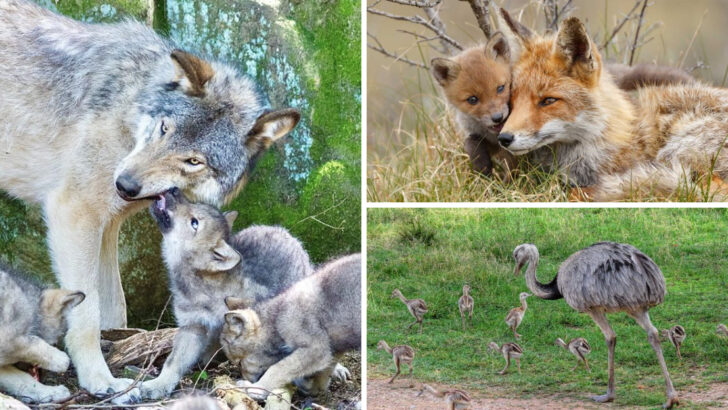Fatherhood in the wild is no easy job. While some dads vanish before their offspring even open their eyes, others go above and beyond—protecting, nurturing, and even sacrificing for their young.
From tiny frogs that carry their babies on their backs to lions who defend their pride with unmatched strength, these fathers prove that parenting isn’t just a mother’s role. Some go without food, some battle predators, and a few—like the emperor penguin—brave freezing temperatures just to keep their young alive.
Their dedication isn’t just remarkable—it’s downright heroic. These fathers don’t just step up; they redefine what it means to care, to protect, and to ensure the next generation thrives.
Get ready to meet 21 extraordinary animal dads who prove that being a great father is a wild and noble calling.
Emperor Penguin
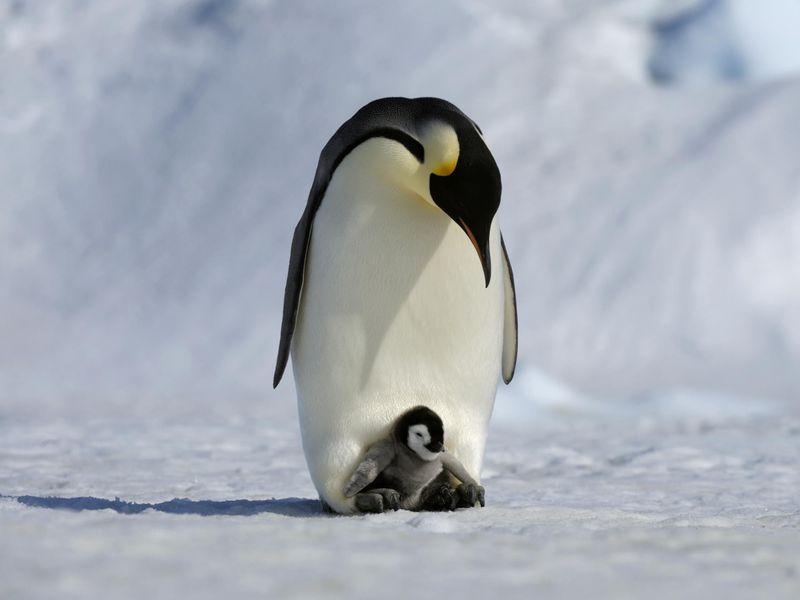
Emperor Penguin fathers exhibit extraordinary dedication by incubating eggs during the harsh Antarctic winter. While the female penguins venture to the sea for food, the males huddle together, balancing the eggs on their feet to keep them warm. This paternal commitment lasts for about two months, during which the males endure sub-zero temperatures and fierce winds. They rely on their body fat reserves for survival. Their devotion ensures the eggs hatch successfully. These resilient fathers showcase the lengths some animal dads go to, ensuring their chicks have the best possible start in life.
Seahorse
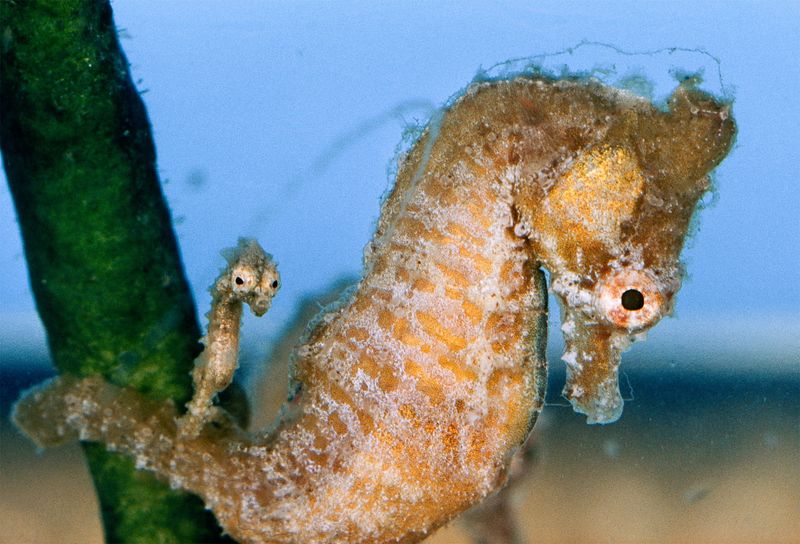
The Seahorse father is a unique marvel of nature, as he carries and nurtures his young in a specialized pouch. The female deposits her eggs into the male’s pouch, where he fertilizes them. Over several weeks, the father provides protection and nutrients until the young are ready to be born. This fascinating reversal of traditional roles highlights the Seahorse’s dedication to offspring care. Upon birth, the tiny seahorses emerge fully developed and ready to face the world. Such remarkable paternal involvement showcases the diverse parenting strategies across the animal kingdom.
Marmoset
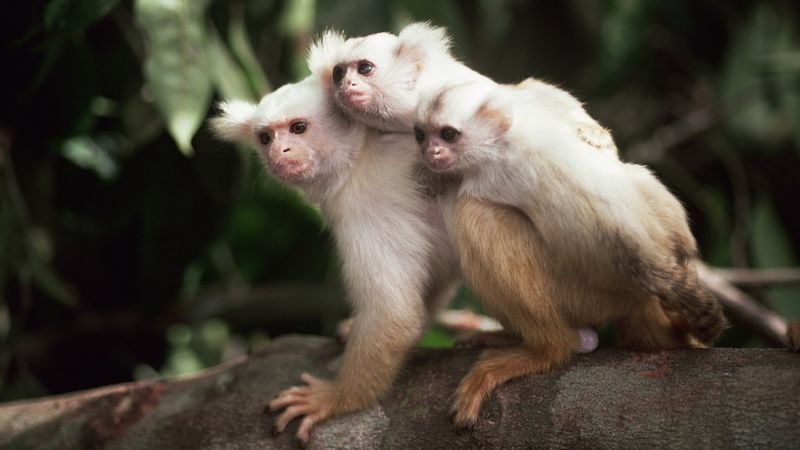
Marmoset fathers are deeply involved in rearing their young, often carrying and caring for the infants shortly after birth. These small primates live in close-knit family groups, where the father takes on significant caregiving responsibilities. He carries the babies on his back, allowing the mother to recuperate and focus on nursing. This cooperative parenting approach ensures the young receive round-the-clock attention and protection. The father’s active participation not only benefits the infants but also strengthens familial bonds, illustrating the importance of teamwork in successful parenting.
Giant Water Bug
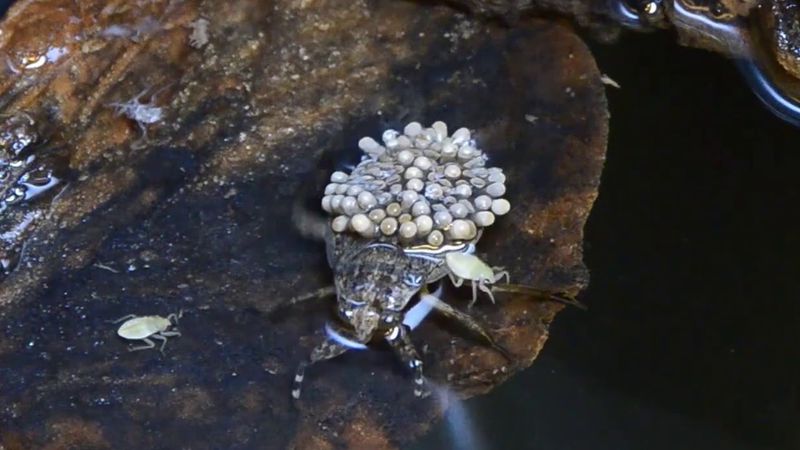
The Giant Water Bug father exemplifies dedication by carrying his offspring on his back. The female lays eggs on the male’s back, where they remain until hatching. This ensures the eggs receive adequate oxygen and protection from predators. The father’s vigilance and nurturing role are crucial for the survival of his young. By transporting eggs, he enables them to develop safely in an aquatic environment. This unique form of paternal care showcases the extraordinary lengths some insect fathers go to in ensuring the continuation of their species.
Rhea
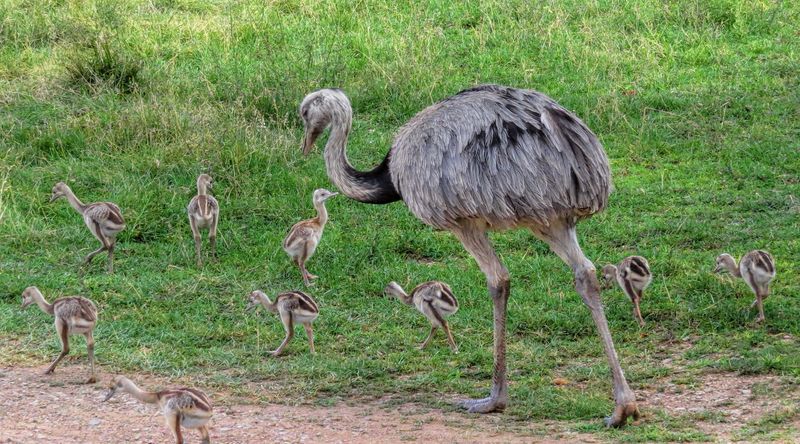
The Rhea father is a remarkable example of avian parenting. After the female lays her eggs, he takes charge of incubation and rearing the young. This flightless bird, native to South America, guards the nest and ensures the eggs are kept warm and safe. Upon hatching, the father leads his brood of chicks, teaching them to forage and avoid predators. His nurturing vigilance ensures the chicks develop survival skills essential for thriving in the wild. The Rhea’s paternal dedication highlights the vital role fathers can play in avian family life.
Greater Flamingo
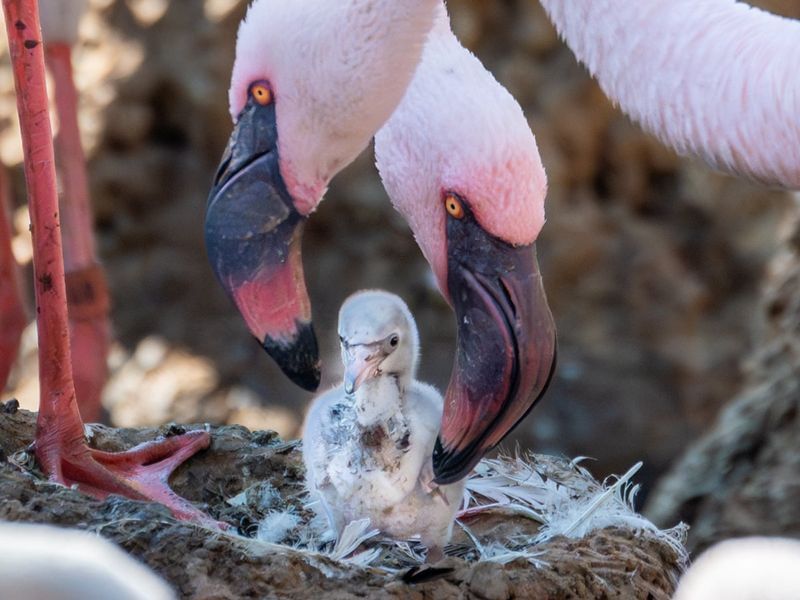
Greater Flamingo fathers play an active role in raising their chicks, sharing responsibilities with the mothers. Both parents take turns incubating the single egg and feeding the chick once it hatches. The father regurgitates a nutrient-rich substance called “crop milk” to nourish the young. This collaboration ensures the chick receives constant care and sustenance. The flamingo’s striking pink plumage and graceful movements make their parenting efforts even more captivating. By working together, Greater Flamingo parents provide a stable environment conducive to their chick’s healthy growth and development.
Emu
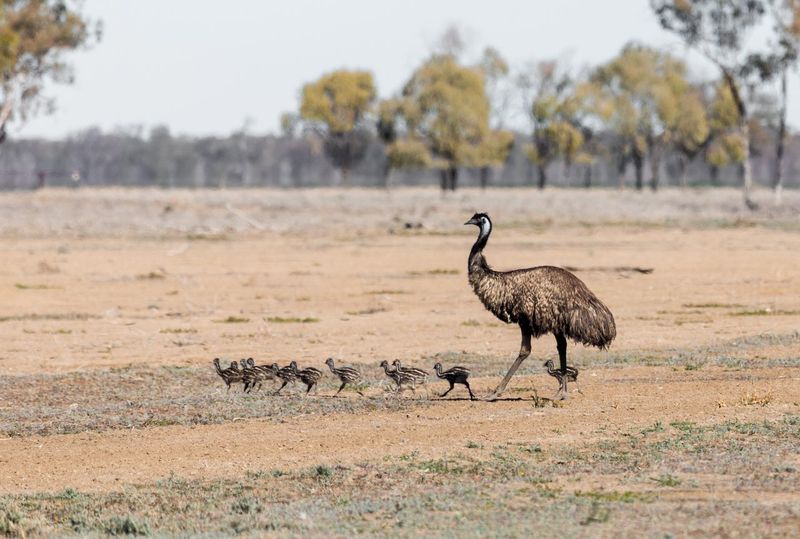
Emu fathers are known for their incredible dedication, taking sole responsibility for incubation. After the female lays the eggs, the male incubates them for about eight weeks, without leaving the nest. During this period, he survives on stored body fat and minimal water. Once the chicks hatch, the father continues to protect and guide them. This nurturing role ensures the young emus learn essential survival skills. The Emu’s commitment highlights the lengths to which avian fathers go in ensuring the success of their offspring. The father’s diligence is truly remarkable.
Titi Monkey
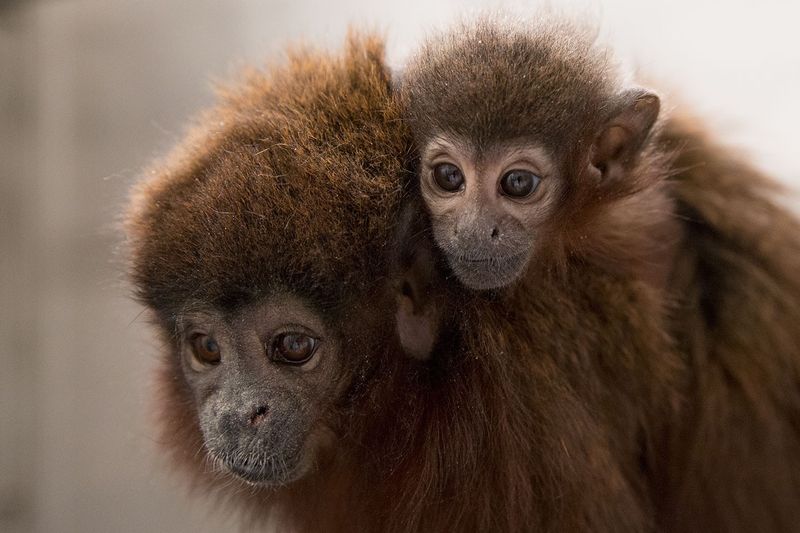
Titi Monkey fathers are exemplary caregivers, playing a pivotal role in the upbringing of their young. These devoted primates are highly involved in carrying, grooming, and protecting their offspring. The fathers carry the infants most of the time, allowing mothers to rest and focus on nursing. This active involvement fosters strong family bonds and enhances the survival prospects of the young monkeys. The warmth and closeness shared between the father and his offspring reflect the deep emotional connections present in Titi Monkey families, emphasizing the diverse ways in which primates care for their young.
Red Fox
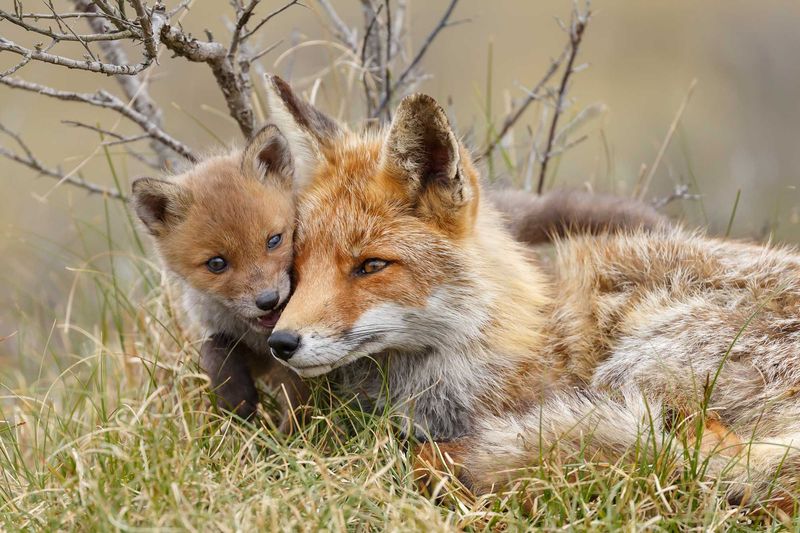
Red Fox fathers are attentive providers, playing an integral role in supporting their young during the early stages of life. After the kits are born, the father helps the mother by hunting and bringing food to the den. This ensures the growing kits receive adequate nutrition while the mother recuperates. As the kits mature, the father engages them in play, teaching valuable skills necessary for hunting and survival. The Red Fox’s dedication to provisioning and educating his offspring underscores the importance of paternal involvement in the animal kingdom.
Jacana
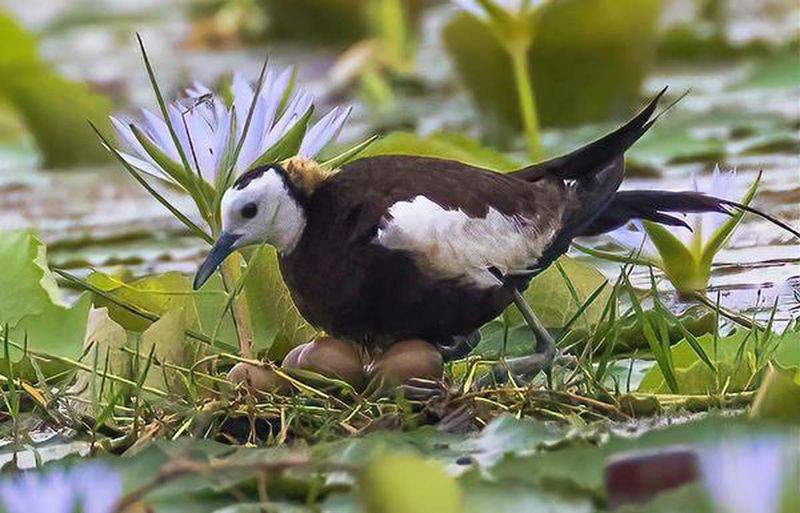
Jacana fathers are remarkable for their nurturing approach, taking full responsibility for the incubation and care of their young. These wading birds, found in tropical wetlands, exhibit an unusual role reversal, where the male incubates the eggs and protects the chicks. The father balances on floating vegetation, offering protection and guidance. Once the chicks hatch, he continues to safeguard them against predators. The Jacana’s dedication to its young is a testament to the diverse and adaptable parenting strategies found in the bird world. Such commitment ensures the chicks thrive in their aquatic habitat.
Pipefish
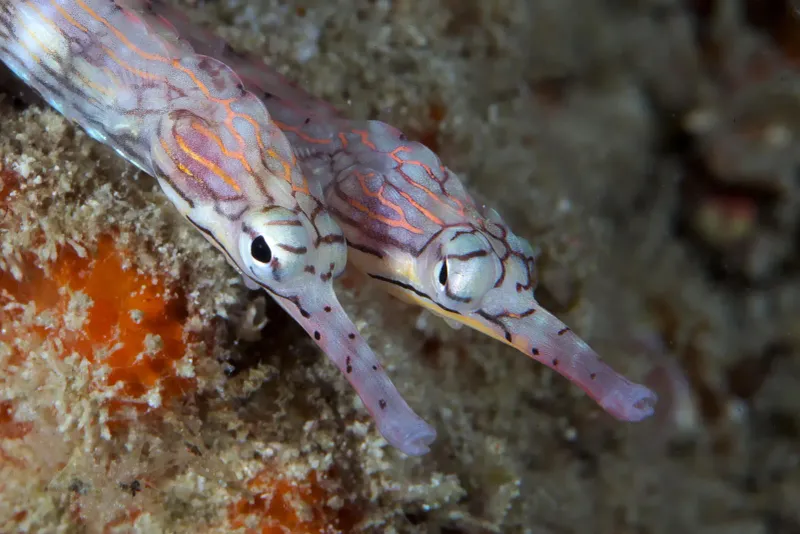
Pipefish fathers share a unique similarity with their seahorse relatives, as they carry and nurture their young in specialized brood pouches. The female transfers her eggs to the male’s pouch, where he fertilizes them. Throughout the incubation period, the father provides protection and nutrients, ensuring the developing offspring’s safety. Once the young are ready, they are released into the ocean. This intriguing role reversal highlights the pipefish’s commitment to paternal care, showcasing the diverse strategies fish employ to ensure their progeny’s survival. Such dedication is awe-inspiring.
Sandgrouse
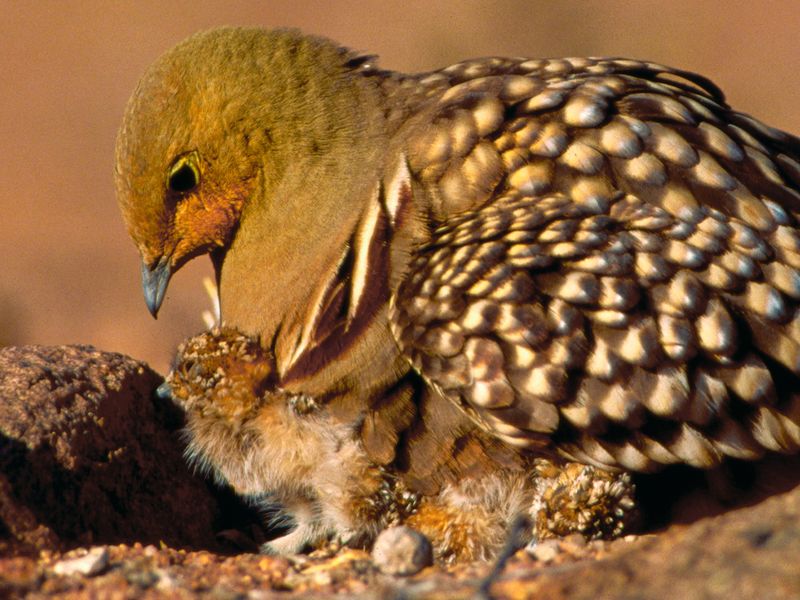
Sandgrouse fathers are renowned for their resourcefulness, playing a key role in ensuring their chicks’ hydration. In the arid desert environments, these birds soak their belly feathers at distant water sources, returning to the nest to provide water for their young. This ingenious method allows the chicks to drink directly from the father’s feathers. Such dedication is crucial for survival in harsh climates where water is scarce. The Sandgrouse father’s ability to adapt showcases the incredible lengths animal parents go to in ensuring the well-being of their offspring.
Thorny Devil
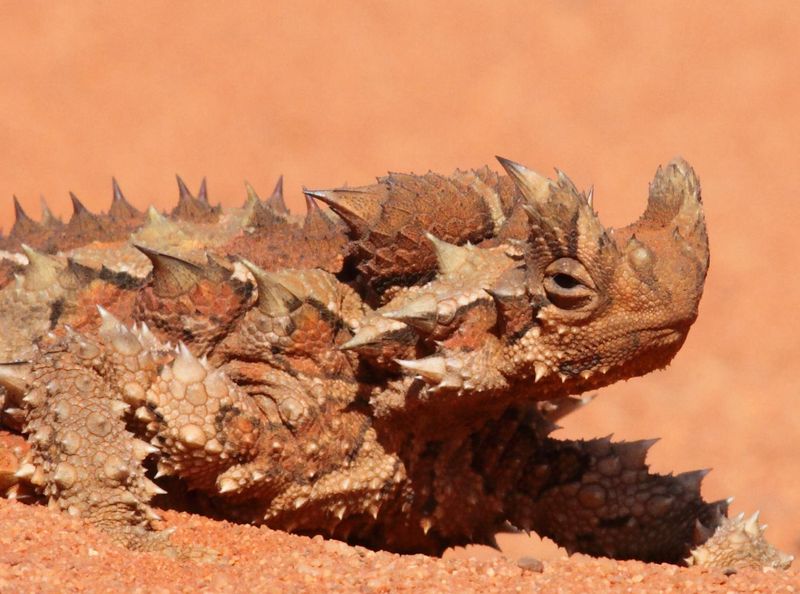
Thorny Devil fathers, though less involved post-hatching, are crucial in egg protection during the early stages. In the harsh Australian desert, they guard nests, ensuring the eggs remain safe from predators and environmental threats. This vigilant behavior is vital for the eggs’ success, as the desert hosts many challenges. The Thorny Devil’s adaptation to its environment, combined with its protective instincts, highlights the diverse parental strategies among reptiles. These resilient fathers demonstrate that dedication to offspring can manifest in various forms across the animal kingdom.
Wolf
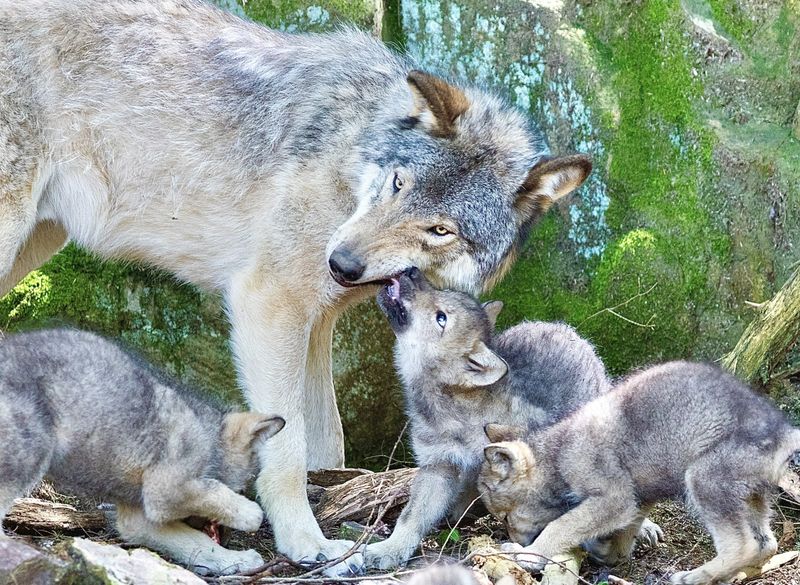
Wolf fathers are integral to the structure and success of their packs, playing active roles in rearing pups. Within the pack, the father assists in feeding, protecting, and educating the young. By regurgitating food and participating in hunts, he ensures the pups receive necessary nutrition. The father’s leadership and teaching of survival skills are vital for the pups’ integration into the pack. This cooperative approach fosters a strong pack bond, emphasizing the significance of family and teamwork. The wolf father’s dedication is a testament to the complex social structures in the animal kingdom.
Ostrich
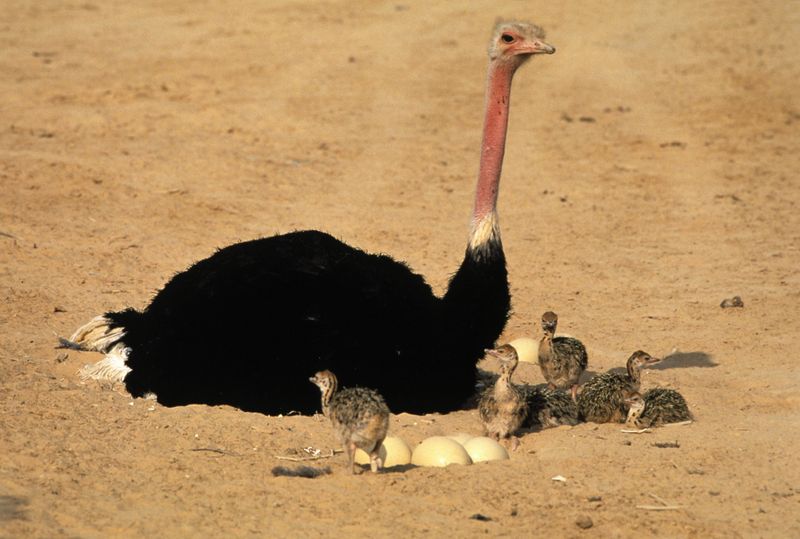
Ostrich fathers are exemplary in their parenting roles, taking charge of incubation and chick rearing. After the eggs are laid, the male assumes responsibility for the nest, ensuring the eggs are protected and incubated. Once the chicks hatch, the father leads them, teaching vital survival skills. The ostrich’s attentive nature and protective instincts are crucial for the young’s development. This dedication ensures the chicks grow into independent adults capable of thriving in the wild. The ostrich father’s commitment underscores the diverse and dynamic roles fathers play in avian species.
California Mouse
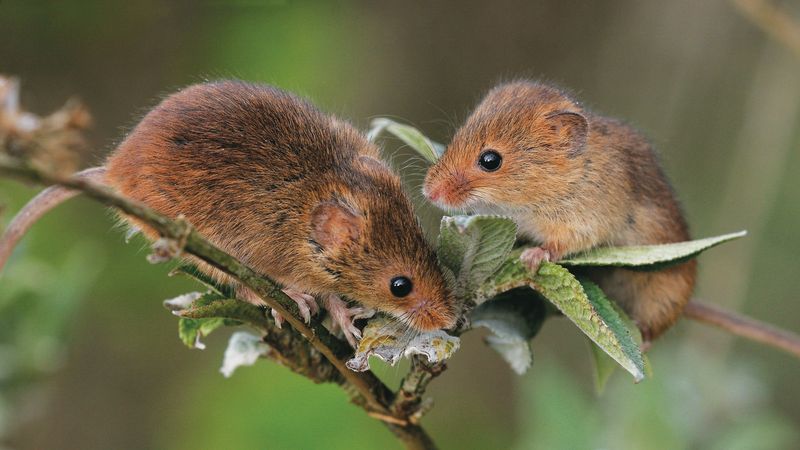
California Mouse fathers are remarkable for their monogamous relationships and active involvement in parenting. These fathers participate in nest building, grooming, and feeding. Their commitment extends to protecting the nest and teaching the young essential survival skills. By sharing responsibilities, the California Mouse father ensures the pups’ well-being and family unity. This cooperative parenting approach highlights the importance of partnership in successful rearing. The father’s dedication reflects the deep bonds formed within family units, illustrating the varied ways mammals care for their young.
Frog (Darwin’s Frog)
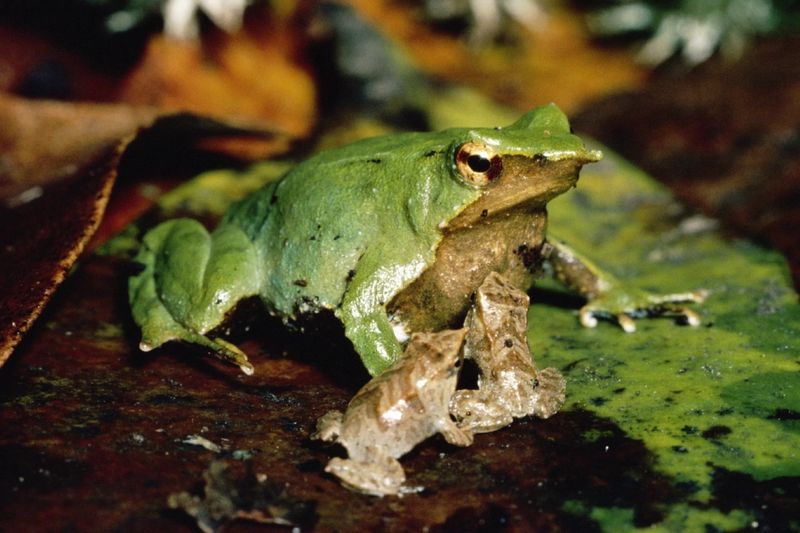
Darwin’s Frog fathers exhibit a unique form of parental care, carrying their developing young in specialized vocal sacs. After the female lays eggs, the male guards them until they hatch. He then transfers the tadpoles into his vocal sac, where they continue to develop. This protective behavior ensures the young frogs receive nutrients and protection. Upon maturity, the father releases them into the environment. This remarkable strategy showcases the diverse adaptations amphibians employ to ensure their offspring’s survival. The Darwin’s Frog father’s dedication is both fascinating and crucial.
Clownfish
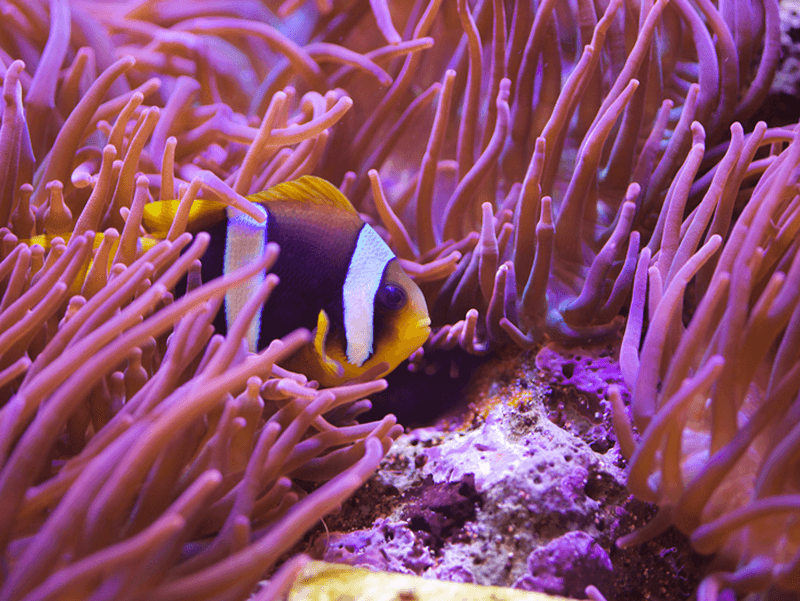
Clownfish fathers are attentive caregivers, playing an active role in egg protection and care. These colorful fish, residing in coral reefs, diligently guard their eggs from predators. The male fans the eggs, ensuring proper oxygenation and removing debris. His vigilance extends to defending the nest, showcasing his commitment to safeguarding future generations. This hands-on approach ensures the eggs develop successfully, highlighting the clownfish father’s essential role in parenting. Such dedication is a testament to the diverse and fascinating strategies fish employ in the wild.
Siamang
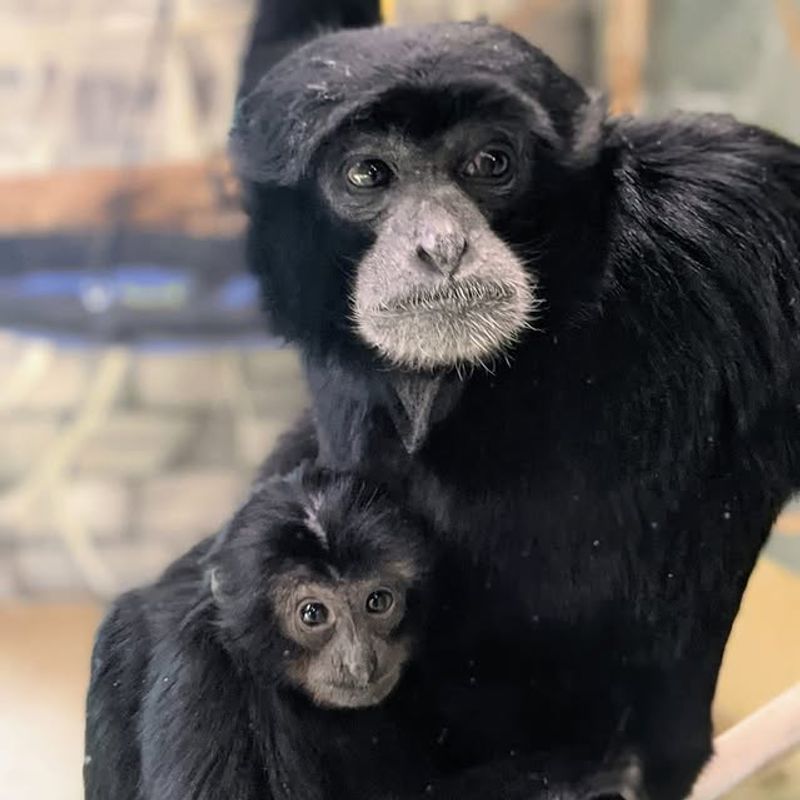
Siamang fathers are highly involved in their offspring’s upbringing, showcasing strong familial bonds. These gibbons, native to Southeast Asia, engage in cooperative parenting, with fathers sharing responsibilities in carrying and protecting their young. The father’s involvement allows the mother to focus on nursing. This active participation is crucial for the young siamangs’ development and socialization. The close-knit family structure and emotional connections highlight the importance of paternal care in primates. The Siamang father’s commitment to his family exemplifies the diverse parenting practices found among gibbons.
Nightingale
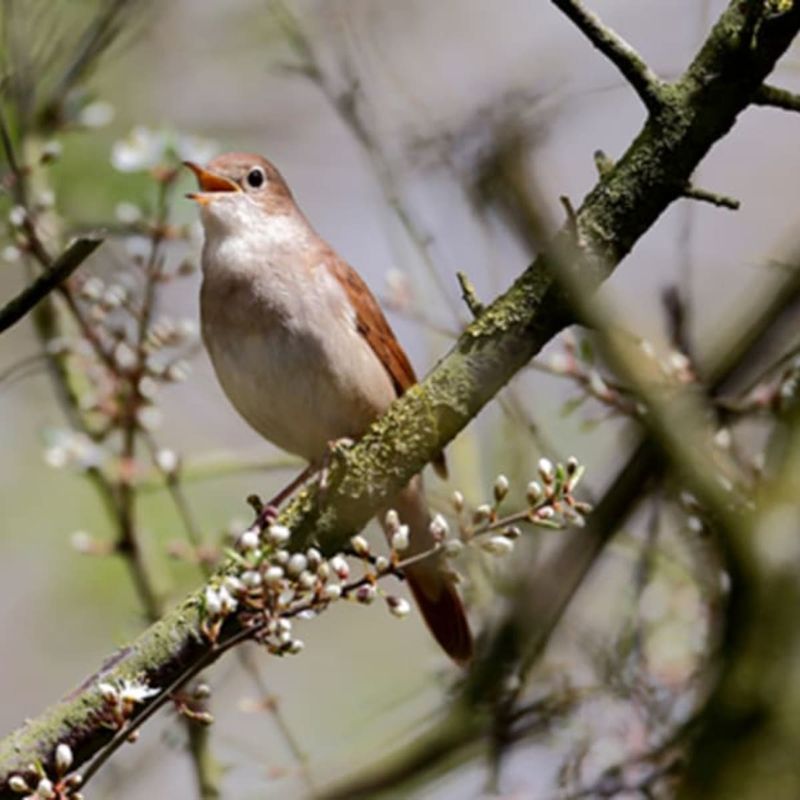
Nightingale fathers are known for their vocal prowess, playing a crucial role in territorial defense and communication. These songbirds engage in duet singing with their mates, strengthening pair bonds and establishing territory. In addition to their musical contributions, fathers assist in feeding and protecting the chicks. The father’s melodies and devotion ensure the young grow up in a safe and nurturing environment. Such dedication underscores the importance of communication and cooperation in avian parenting. The nightingale father’s commitment to his family highlights the multifaceted roles fathers play in nature.
Great Horned Owl
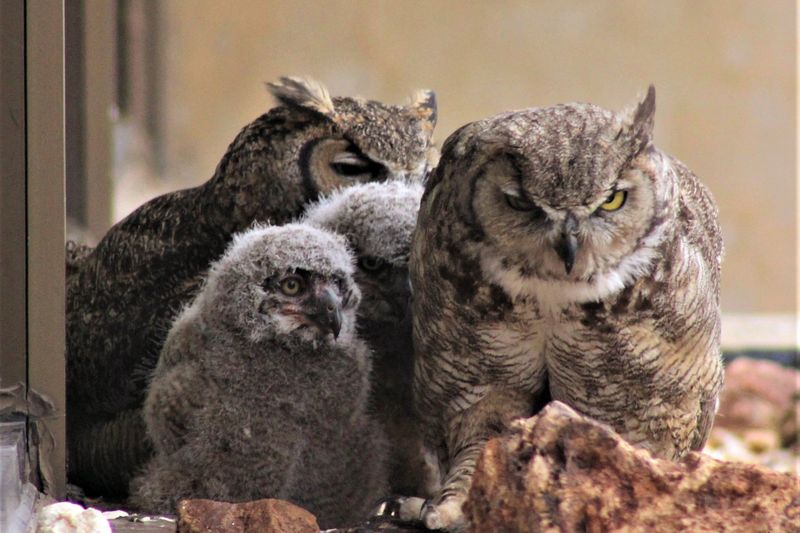
Great Horned Owl fathers are vigilant protectors, ensuring the safety of their nests and offspring. These powerful birds of prey participate in hunting and feeding their young, sharing responsibilities with the mother. The father’s keen senses and protective instincts are crucial for the owlets’ survival. By defending the nest from predators, he ensures a secure environment. This cooperative approach reflects the importance of paternal care in avian species. The Great Horned Owl father’s dedication showcases the diverse strategies birds employ to raise their young successfully.

